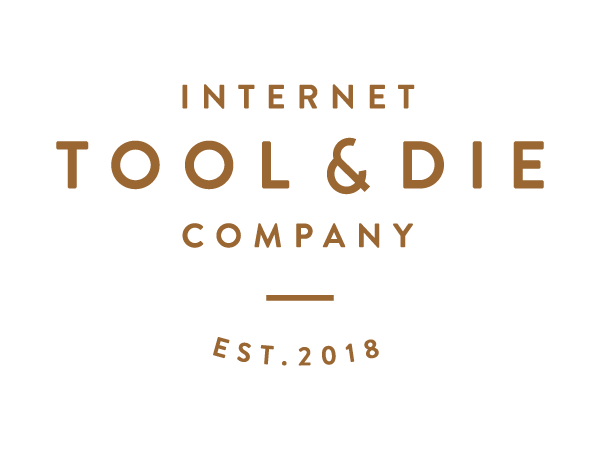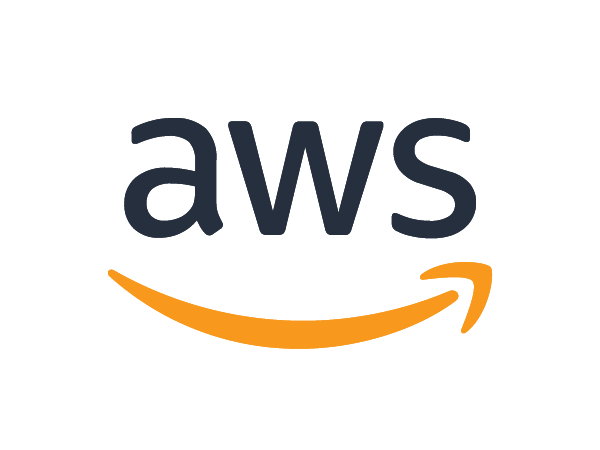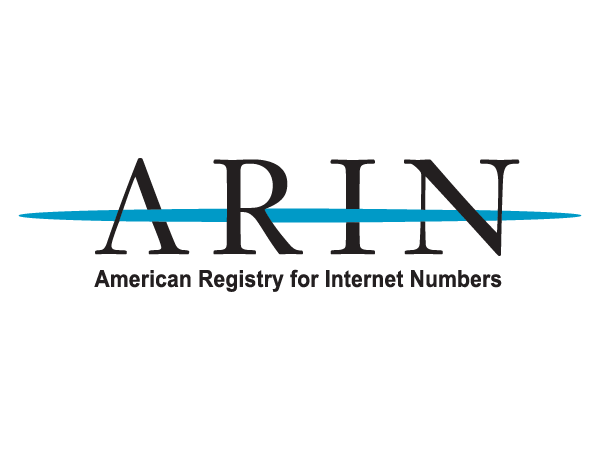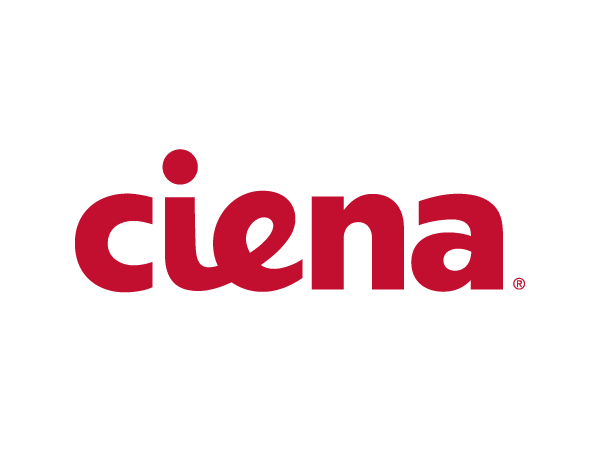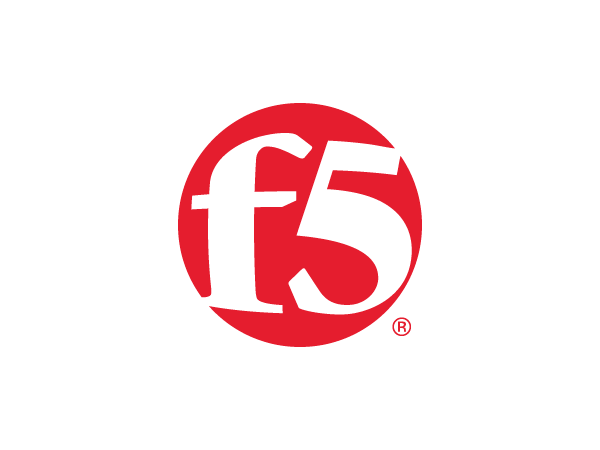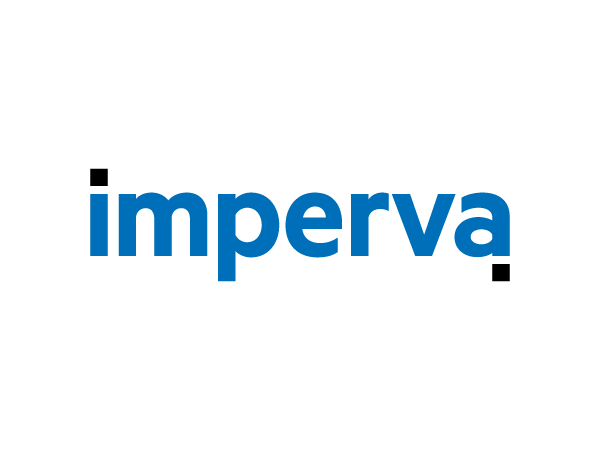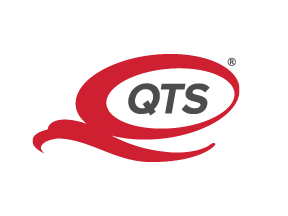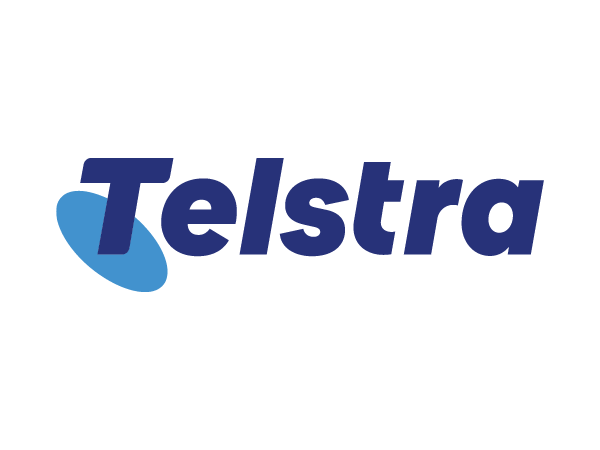NANOG 87 Agenda
NANOG 87 Agenda
Click on any talk title in the agenda to view the full abstract and speaker info.
Please note agenda is subject to change.
Sunday, February 12, 2023
| Topic/Presenter |
|---|
RecordingsFull AbstractTheme: Interacting With Sources of Truth The NANOG 87 Hackathon will focus on Interacting With Sources of Truth, whether a single database or a collection of correlated data from multiple sources. Such examples could be an IPAM, Configuration Databases, Datacenter Infrastructure Management Databases, Configuration Templates/Models, RPKI Validators, etc. You could develop a feature, fix a bug for an existing open-source solution, or roll your own! During this Hackathon, team leaders will work with teams collaboratively to understand the respective code bases and help troubleshoot issues. Utilizing collaboration services from Zoom and Slack and lab infrastructure consisting of virtualized devices from several vendors, Hackathon participants can work individually or self-organize into teams to work on software passion projects. Learn more + register: https://www.nanog.org/events/nanog-87-hackathon/ |
Full AbstractDescription: Exploration of the history of the Domain Number System (DNS), the original design, how it works, and its evolution. The Domain Name System (DNS) is a distributed database that maps domain names to IP addresses and is a core piece of Internet functionality. This 1-day seminar will kick off our 87th community-wide conference in Atlanta, GA. Learn about the DNS via discussion and real-world, real-time, hands-on investigation. The DNS is a critical part of Internet functionality. It is quite an old protocol, with many, many modifications made over the years. We'll talk about the original designs and current implementations while seeing all this in action using freely available tools, mostly Dig. This class is free. Registration is required to attend. https://www.nanog.org/events/nanog-87-dns-fundamentals/registration/registrant |
|
|
Monday, February 13, 2023
| Topic/Presenter |
|---|
|
|
|
|
NANOG 87 Newcomers Orientation
Edward McNair - Right-Brain Consulting
FilesFull AbstractNew to NANOG ? Don’t miss our Newcomers Breakfast for an opportunity to network with fellow newcomers and learn more about NANOG - both the community and the organization. Topics to be covered include: Speakers
|
NANOG 87 Conference Opening
Edward McNair - Right-Brain Consulting
Konrad Zemek - Path Network
Future Cain - CEO, Future of SEL
Speakers
|
Full AbstractBrilliant networks delivering next-generation connected experiences are here. Comcast Chief Network Officer Elad Nafshi will share how 10G network technologies are evolving connected experiences in real time, even as they continue to get smarter, faster, more reliable, and secure for future generations. Speakers
|
The Operational Impacts of Supporting a Disaggregated, Distributed, Cloud-based Network Architecture
Aliraza Bhimani - Comcast Cable
Recordings
FilesFull AbstractManaging and maintaining highly scalable networks has historically been a challenging task. A plethora of ISPs/CSPs have been trying to simplify processes and procedures; yet this task gets more complicated as they are faced with the growing cost pressure of supporting today’s IP network traffic demands (driven by video, gaming, and remote working) and future 5G traffic volumes. All these trends and market forces are forcing cable operators to rethink and rearchitect their legacy IP networks and operations in ways that can give them a competitive edge. The intent of this presentation is first to describe why distributed disaggregated services such as a Disaggregated Distributed Chassis (DDC) will be paramount for the success of ISPs/CSPs. It will examine how these services differ from traditional architectures, and which operational processes, engineering skills and supporting tools are needed. It will showcase an example of the DDC model deployed in the production environment of one of the largest cable operators in the world. It also will provide insights on how to improve network availability and reliability thanks to a smaller “blast radius” for outages. In summation, ISPs/CSPs’ interest in network disaggregation has been growing, driven by a variety of motives such as cost reduction, the removal of vendor lock-in and service innovation. Readers will have a granular understanding of the operational impacts of the DDC approach, and how networks can be managed in a more cloud-like and orchestrated manner. They will also achieve a clear vision for solving operational and business challenges before embarking on a disaggregation project. Speakers
|
RecordingsFull Abstract"Internet Innovators" explores the icon behind the technology. Internet Hall of Fame + recent recipient of the Jonathan B. Postel Service Award, George Sadowsky talks to NANOG producer Elizabeth Drolet about his life and legacy. Sadowsky has helped develop and deploy Information and Communications Technology (ICT) to over 50 developing countries. To view this talk or any of the other Internet Innovator talks on our website, visit https://www.nanog.org/news-stories/nanog-tv/internet-innovators/ |
Uncommon Paths to Beginning Network Automation
Jordan Villarreal
Full AbstractAs network engineers begin adopting automation in their organizations, they inevitably encounter a range of challenges. These are typically accepted as necessary engineering hurdles that need to be overcome in order to bring automation into production, and are subsequently addressed with a mix of de facto standard tooling and traditional training. Unfortunately, this logical but simplistic strategy overlooks some powerful alternatives by which automation can be introduced and even adopted. Chances are, opportunities for accelerating network automation already exist in your organization. In this practical talk we will discuss several alternative strategies to begin automating networks. Engineers who are struggling with the basics will learn new perspectives for addressing automation challenges. We will also introduce a flexible maturity model and a proposed framework for full-cycle automation deployment to aid in examining these uncommon paths to beginning network automation. Speakers
|
Cloud Network Engineering: A Closer Look
Kam Agahian
Full AbstractCloud Network Engineering: A closer look at a new career path What will be presented We believe this career has roots deep in a few different engineering fields such as network, systems and security engineering. This will be covered as part of the “intro” (part 1). In the second part the presenter will move on to the responsibilities and required skillsets (Part 2). Why do we need this session? Who is our target audience? Speakers
|
XKL 400gb during a pandemic
Len Bosack - XKL, LLC
Full AbstractOur current networks depend on fiber technology. This talk describes what it took to develop compact 400 Gigabit technology during the global pandemic. The current realities of compact 400g are discussed. Speakers
|
400ZR: Revolutionizing Networking
Scott Wilkinson
Full Abstract400ZR and its variations have been the most successful development in optical networking in decades, with over 200k modules shipped in 2022, just two years after introduction. 400ZR has changed the way datacenters are interconnected and changed the way datacenters are designed. In this presentation, the speaker will show the current status of 400ZR development and deployment, how it is changing network designs, and explain what is coming next. Speakers
|
Full AbstractHow often do you find yourself doing the same set of commands when troubleshooting issues in your network? I am willing to bet the answer to this is quite often! Usually we have a list of our favorite commands that we will always use to quickly narrow down a specific problem type. Switch reloaded unexpectedly? "show reload cause" Outputs like the above examples help you quickly pinpoint the source of your failures for remediation. SSH'ing into the boxes and running these commands by hand is time consuming, especially if you are for example a NOC dealing with numerous failures throughout the day. Most switch platforms have API's now and you can instead program against them to get these outputs in seconds. I will go over a variety of examples and creative ways to use these scripts for optimal use of your troubleshooting time and to get you away from continually doing these repetitive tasks by hand. NOTE: My tutorial examples will be using python and the Arista pyeapi module with Arista examples, but the concepts can easily be transferred to other platforms and languages. Speakers |
Sponsors: |
Imposter Syndrome in Networking - Overcoming Imposter Syndrome to Further Your Network Automation Journey
Matt Vitale
Full AbstractThis presentation discusses Imposter Syndrome, the silent myth that so many of us in Networking face. I dissect this myth with the audience, and provide real world examples of how they can overcome it. My examples focus on the Network Automation field, and how this feeling is even more prevalent as a Network Automation Engineer compared to other, more traditional IT roles. Speakers
|
Can Optical Channel Margins Help Alleviate Congestion at the IP Layer?
Cengiz Alaettinoglu
Full AbstractWhen an IP network is congested, operators could take advantage of the channel margins in the underlying optical network and increase capacity of the IP links. Although channel margins are required for the long-term health of the optical service, it might be possible to tap into the margin while the IP network is being repaired. We present a new converged Traffic Engineering SDN approach that looks at the IP and optical layers of the network holistically to help operators alleviate IP congestion. Speakers
|
Full AbstractgRIBI is a control plane gRPC service that enables an external entity (say a controller) to inject and query entries into a network device’s RIB. The data model to represent the entries reuses the OpenConfig Abstract Forwarding Table (AFT). Since the entries are injected into the RIB, there’s no need for the external entity to assume full ownership of the forwarding table nor be aware of all the forwarding entries. Programming operations are transactional with support for acknowledgements (per operation) of installed state in the device’s RIB and (hardware) FIB. Use of gRPC and AFT data model allows for vendor neutral support on the external entity. Speakers
|
Wavelength Services Delivered Another Way
Errol Roberts
Full AbstractAdvances in routing silicon and pluggable optics are enabling a new network architecture to converge traditional private line services onto a packet transport infrastructure. Private line emulation is cost-efficient for the delivery of high bandwidth, bit transparent and dedicated network connectivity services. In this session private line service attributes will be discussed and the key technology building blocks to deliver mission critical services in a fundamental new and beneficial way for both the end-customer and the provider Speakers
|
Full AbstractThe forum provides time for attendees to meet and network with others in the peering community present at NANOG. Peering Representatives, who completed and submitted the form will have a dedicated highboy table for up to 2 representatives. They will be able to distribute business cards, and provide a white paper or 1 sheet marketing page. Please note: any other type of giveaway is not allowed. |
Full AbstractAddress: *NANOG Badge required for entry |
Tuesday, February 14, 2023
| Topic/Presenter |
|---|
|
|
|
|
Full AbstractThe Members Meeting agenda and link to the webinar details are available for Members only. You MUST be signed in with your NANOG Profile account to view the Members Meeting Agenda page. Please bring (or share via email) any questions you would like to discuss at the meeting. |
Full AbstractMary Walton, in her book “The Deming Management Method”, says “In God we trust. All others must use data.” Over the last 20 years, my colleagues and I have been engaged in understanding and improving the Internet through large-scale measurement, and of course, data. Using a variety of measurement tools, ranging from Internet telescopes to active scanning to Netflow, we set about the task of collecting measurements about Internet protocols, such as IPv4 and IPv6, services, such as BGP and DNS, and applications, including email and the web. Our work has focused primarily on improving the security and availability properties of these components and we have studied everything from man-in-the-middle attacks to spam, worms, botnets, and DDoS. Over time, what questions we ask and how we seek to answer them have co-evolved and, somewhat surprisingly, our approach today can best be understood not through traditional network measurement, but through the lens of security principles. I’ll argue that this philosophy is something worthy of emulation, not only in its ability to understand and improve the quality of our networks and services today, but also as a way of thinking about the design, adoption, and operation of tomorrow’s networks. Speakers
|
Assessing the Aftermath: Evaluating the effects of a global DDoS-for-hire service takedown on the DDoS threat landscape
Richard Clayton - University of Cambridge
John Kristoff - NETSCOUT / Dataplane.org
RecordingsFilesFull AbstractIn this presentation, we will provide a synopsis of the criminal DDoS-for-hire ecosystem; examine details of a simultaneous, internationally-orchestrated takedown of multiple DDoS-for-hire services in December of 2022; and assess the real-world impact of this action via statistical analysis of global DDoS attack activity. Speakers
|
Retroactive Identification of Targeted Domain Hijacks
Gautam Akiwate - Stanford University
Full AbstractSophisticated attackers, typically nation-state actors, have begun to leverage access to key DNS infrastructure to then hijack target organization domains. Target organizations now not only Speakers
|
Legal Implications of Recent Developments in RPKI
Christopher Yoo - University of Pennsylvania
Full AbstractThe December 2018 release of our NSF-funded study analyzing legal barriers to RPKI adoption revitalized interest in reforms to lower these barriers. In the fall of 2022, ARIN made important changes to its Relying Party Agreement and Registration Services Agreement designed to address the concerns raised by our report. This proposed session would offer a legal assessment of these recent developments. Speakers
|
|
|
Careers in the Age of Uncertainty
Peter Thimmesch - Internet Tool & Die Company
Caron Hummer
RecordingsFull Abstract1) Presentation: Prof. Mark Granovetter, Stanford University, about Interpersonal ties and the 2) General Session Talk: What to do now that you've been laid off! by Caron Hummer, Chief 3) General Session Panel: The Candidate Journey. Speakers
|
Panel: Network Automation Tools Show Down
Nick Bogle - Ziply Fiber
Thomas Donnelly - Stripe
Matt Griswold - 20C, FullCtl
Mauricio Rojas - Nokia
Rick Sherman - Datadog
Full AbstractThere are many platforms out there to help you automate your deployments and configurations of your network devices out there. This panel will cover some of the major ones such as Ansible, Puppet, Salt, Kubernetes, Nornir, Netmiko, Netpalm We shall focus on: Speakers
|
ARIN General Update
John Sweeting - ARIN
Full AbstractARIN is a nonprofit, member-based organization that administers IP addresses & ASNs in support of the operation and growth of the Internet. Hear from ARIN’s Chief Customer Officer on where the organization sits with IPv6 growth, IPv4 Waitlist and Transfer stats, along with other notable updates across our programs and services. Speakers
|
|
|
Panel: Network Engineering Jeopardy!
Charles Rumford - Deft and TallWireless
RecordingsFull AbstractNetwork Engineering Jeopardy will consist of three teams competing for all the glory! Speakers
|
Stop, DROP, and ROA: Effectiveness of Routing Defenses through the lens of DROP
Gautam Akiwate - Stanford University
RecordingsFilesFull AbstractWe analyze the properties of 712 prefixes that appeared in Spamhaus’ Speakers
|
ChatGPT and Networking Engineering
Mike Starr - trackd.com
Full AbstractThis talk will explore the potential use cases for ChatGPT in network engineering, including automating configuration management, troubleshooting, and documentation. Examples will be provided of how ChatGPT has been used to assist in these tasks for popular vendors such as Cisco and Juniper. Additionally, the challenges and limitations of using ChatGPT in network engineering will be discussed. The talk will provide an overview of the benefits and possibilities of using ChatGPT in network engineering and how it can help network engineers to focus on more critical tasks. ChatGPT Prompt: Can you create an outline for a 30 minute talk about how ChatGPT could be used by network engineers in their daily duties? ChatGPT Response: I'd be happy to help! Here's an outline for a 30-minute talk on how ChatGPT could be used by network engineers in their daily duties: ChatGPT Prompt: Can you write an abstract for this talk? ChatGPT Response: The use of ChatGPT, a large language model developed by OpenAI, in network engineering can help to automate repetitive and time-consuming tasks, reduce human error, and improve the efficiency and accuracy of network operations. Speakers
|
Verisign's path to RPKI
hasan siddique
Michael Hollyman
FilesFull AbstractVerisign's role as a Root operator and TLD for com/net anchors our position in the global Internet supply-chain coupled with our implementation of unique origin ASN's (BCP: 169) further provides differentiation in our RPKI implementation. As such, Verisign has a compelling use-case that will provide value to Internet stakeholders, operators and stewards alike. Speakers
|
Lightning Talk: Global Developments in the Internet Number Registry System - February 2023
John Curran - ARIN
FilesFull AbstractARIN President and CEO John Curran will provide a brief summary of global developments in the Internet Number Registry System, including ongoing developments in AFRINIC governance. Speakers
|
Full AbstractIn a few days it will be 1 year since Russia invaded Ukraine, this talk is to say thank you to all donors and individual supporters for helping us keep Ukraine connected. Speakers
|
Lightning Talk: Netops on Mastodon
John Kristoff - NETSCOUT / Dataplane.org
Full AbstractWe not only connect LANs together, we also connect with each through venues such as NANOG meetings and mailing lists. Increasingly we also utilize a number of more modern social media platforms to connect and interact with one another. One such platform that has recently attracted a great deal of interest is the "fediverse" and specifically the micro-blogging software better known as Mastodon. This lightning talk provides a quick introduction to Mastodon, netop-specific suggestions on how to get started, and a nudge to to consider joining others there. Speakers
|
Full AbstractAddress: *NANOG Badge required for entry |
Wednesday, February 15, 2023
| Topic/Presenter |
|---|
|
|
|
|
NANOG 87 Community Meeting
Edward McNair - Right-Brain Consulting
Full AbstractDon’t miss our Community Meeting for an opportunity to hear about what is happening with NANOG and the Program Committee. Speakers
|
Tutorial: Kubernetes 101 for Network Professionals
Mauricio Rojas - Nokia
Full AbstractOverview of the Fundamental components for Kubernetes that every Network Professional should know: Intro to Network Namespaces and the fundamentals of Pods and how they communicate in a Kubernetes Cluster. K8s services like NodePort and LoadBalancer. An overview about CNI plugins, the built-in ones and the ones available in the market (i.e. Calico, Cilium). Comparison between the most popular CNI Plugins. Why multus is so important in Telco? Security Policies. Speakers
|
RecordingsFilesFull AbstractThe idea is to share the impact and the records that the FIFA World Cup 2022 generated over the Internet, and also the users. Warning NANOG that the next one is going to be in USA, Canada and Mexico, so better get ready for new records. Showing how capacity on the customers or peers should be ready for events with this characteristic to let the users use the internet without bad experiences. Speakers
|
Managing Digital Coherent Optics in Routers
Emerson Moura
Full AbstractPluggable Digital Coherent Optics (DCO) is a breakthrough technology that allows routers to integrate state of the art coherent DWDM interfaces without the need for specialized hardware. This is possible thanks to the incredible power efficiencies and compactness of recent DCO implementations over QSFP56-DD and other transceivers that can be deployed directly into standard 400GE host ports. Replacing traditional DWDM transponders by pluggable DCO significantly lowers the cost of building high-speed networks with massive capacity and extended reaches. Even greater gains in cost efficiencies are possible with Routed Optical Networking, a novel network architecture that couples DCO with innovations in IP/MPLS, management and automation to build a fully converged and programmable network architecture optimized at the packet switching layer. Speakers
|
RecordingsFull AbstractJoin us for a 15 minute video recap of the hackathon - where the theme was Interacting With Sources of Truth |
|
|
Get more from your v4 with CGNAT and Proxy ARP
Eric Miller - GiGstreem / SkyWire
Full AbstractIPv4 is exhausted. We can do a better job of being efficient with our IPv4 utilization while also making IPv6 a reality in our networks. The perfect combination is dual-stacking IPv4 CGNAT and IPv6. Utilizing RFC6598 space, we can extend a dedicated VLAN per customer to make IPv6 EUI-64 possible without running out of IPv4 space to assign with it. Speakers
|
Tutorial: gNMIc - an intuitive gNMI CLI and a feature-rich telemetry collector
Roman Dodin
Karim Radhouani
RecordingsFilesFull AbstractThe need to reliably monitor today’s ever-growing networks in the WAN, edge, and data center domains is now more critical than ever. The industry relies largely on SNMP to monitor present networks, a protocol that falls short when used to monitor large networks let alone the increasingly complex networks of the future. Openconfig's gRPC-based streaming telemetry protocol, gNMI is considered by many to be the prime successor to SNMP. It packs features to build modern monitoring stacks, such as a push-based telemetry model, reliable transport, default TLS security, data model-based access to monitored data leaves, and exceptional performance on the wire. This tutorial introduces gNMIc, an open-source software suite which blends together a feature-rich gNMI CLI client and a performant, highly-available telemetry collector. Focusing on gNMI-based streaming telemetry, gNMIc sets itself apart from other general-purpose collectors with unique features including high availability and clustering of collector instances, rich data processing pipelines, sheer support for various outputs for metrics, and embedded caching, to name a few. By the end of this session, participants will understand how gNMIc can be used to configure network devices, and building a modern open-source telemetry stack comprised of a collector, time-series DB, and visualization layer. Speakers
|
V6 - Don't do it wrong
Alex Latzko - DEFT.COM
Full AbstractHabits die hard, and the concepts of address allocation which are perfectly valid for IPv4 just don't work for IPv6, and in fact some IPv4 habits will technically break IPv6 routing efficiency. This is a summary of good address allocation hygiene when people have large blocks to split up, based on RFC suggestions and fifteen years of operational experience in IPv6 Speakers
|
BGP Zombies - Ghost routes as seen by BGP monitoring platforms
Lefteris Manassakis - Code BGP
Full AbstractRecent research studies highlighted a phenomenon known as “BGP zombies", which refers to active RIB entries for prefixes that have been withdrawn, but still persist in BGP routing tables. • the identification of BGP zombies using a BGP monitoring platform other than RIPE RIS (namely the Code BGP Platform) will yield comparable results to those obtained from RIS Live Our results reveal that BGP zombies are a pervasive problem in the Internet routing system, regardless of the monitoring platform and prefix announcement characteristics utilized. We advocate that monitoring platforms should develop mechanisms for accurately identifying and labeling BGP routes as zombies, as well as implementing strategies for promptly alerting users to their presence in order to mitigate the potential negative effects they may have on network stability and performance. Speakers
|
|
|
PeeringLAN 2.0 – Introduction of EVPN at DE-CIX
Thomas King
Full AbstractDE-CIX has been working on the introduction of EVPN on its peering platform since the beginning of 2022. Considering the increasing number of participants, especially in New York and Frankfurt, the introduction of EVPN, including ProxyARP/ND, is required to get the exponentially growing broadcast/multicast traffic in the Peering LANs under control and to reduce the load on customer routers. Additionally, further security features based on a ProxyARP/ND agent according to RFC 9161 are activated and the protocol stack of the DE-CIX global network will be expanded to include RSVP-TE and sBFD. In this presentation, we will present the course of the project, benefits, and side effects for DE-CIX customers explained in technical detail. Speakers
|
Enabling Passive Measurement of Zoom Performance in Production Networks
Oliver Michel - Princeton University
Full AbstractVideo-conferencing applications impose high loads and stringent performance requirements on the network. To better understand and manage these applications, we need effective ways to measure performance in the wild. For example, these measurements would help network operators in capacity planning, troubleshooting, and setting QoS policies. Unfortunately, large-scale measurements of production networks cannot rely on end-host cooperation, and an in-depth analysis of packet traces requires knowledge of the header formats. Zoom is one of the most sophisticated and popular applications, but it uses a proprietary network protocol. In this talk, we demystify how Zoom works at the packet level, and design techniques for analyzing Zoom performance from packet traces. We conduct systematic controlled experiments to discover the relevant unencrypted fields in Zoom packets, as well as how to group streams into meetings and how to identify peer-to-peer meetings. We show how to use the header fields to compute metrics like media bit rates, frame sizes and rates, and latency and jitter, and demonstrate the value of these fine-grained metrics on a 12-hour trace of Zoom traffic on our campus network. Speakers
|
Aggregated Internet Measurement: Actionable network performance data
David Tuber
Lai Yi Ohlsen
Full AbstractSynopsis: Measurement Lab and Cloudflare want to empower network operators with free and open access to data that represents their user’s experience. Our presentation will: 1. Discuss how end-users define “good Internet” and how AIMScore defines the answer Running a distributed network is a challenge by itself, but ensuring that users are having a good experience on that network adds a layer of complexity that can make anyone’s head spin. It’s hard enough ensuring that users can reach the Internet through your network, but ensuring that they can access a myriad of services and applications at peak performance for each is orders of magnitude harder, especially when each application has a different concept of what peak performance looks like. To put it another way: it’s hard enough to know if every user on your network can access Discord, Netflix, and Dota reliably, but it’s even harder to know if every user on your network has a good experience accessing those services because each of those have completely different understandings of what it means to have a good experience. The way we use the Internet on top of a network is ever changing, and the success criteria for the ways we use the Internet is also constantly changing. New metrics like responsiveness are being developed and rolled out to help track these new criteria. Being able to make sure that users have a good experience on your network no matter what is critical for customer retention and cost efficiency. If people have a good experience, they’ll keep using your network. And if people have a good experience, they won’t call support and try and get things fixed. We are proposing a framework and data set that will not only give you insight into what applications consider success, but ways to programmatically detect when users in your network are experiencing degradations from success: Aggregated Internet Measurement Speakers
|
Lightning Talk: My First Professional Conference
Moira Johnson
Full AbstractMy talk will describe my thoughts and impressions on the first professional conference I have attended, this NANOG. I will share my perspective and experiences as a college senior studying electrical engineering and compare it to my experience here at NANOG. Speakers
|
Lightning Talk: Announcing the 2023 State of Network Automation Survey
Chris Grundemann - FullCtl
Full AbstractWe're going to launch a survey to collect information on the state of network automation in 2023. Anonymized and analyzed results of the survey response will be provided to all participants, as well as presented at one or more major networking conference(s). My hope is that we will be accepted to present the results at NANOG 88. I intend to use my 10 minutes to describe the trends in networking and network automation that we are seeing, the different types of automation in the wild today, and primarily to introduce the survey to the audience in hopes of increasing participation and thus providing better results for all. You can find the survey here: https://docs.google.com/forms/d/e/1FAIpQLSc5J_i2rkcpgkvI83Vj3DRVsau5jZ1u99M7p_ecWOgnW_9XHg/viewform?usp=sf_link Speakers
|
Full AbstractMapping Autonomous Systems (AS) to the owner organizations is critical to connect AS-level and organization-level research. Unfortunately, constructing an accurate dataset of AS-to-organization mappings is difficult due to a lack of ground truth information. CAIDA AS-to-organization (CA2O), the current state-of-the-art dataset, relies heavily on Whois databases maintained by Regional Internet Registries (RIRs) to In this work, we leverage PeeringDB (PDB) as an additional data source to detect the potential errors of sibling relations in CA2O. By conducting a meticulous semi-manual investigation, we discover the sources of inaccuracies in CA2O are two pitfalls of Whois data, and we systematically analyze how the pitfalls jointly influence the CA2O. We also build an improved dataset on sibling relations, which corrects mappings of 12.5% of CA2O organizations with sibling ASes (1,028 CA2O organizations, associated with 3,772 ASNs). To make the process more scalable, we design an automatic approach to reproduce our manually-built dataset with high fidelity. The approach is able to automatically improve inferences of sibling ASes for each new version of CA2O. Speakers
|
Speakers |
Network Lounge, sponsored by Segra, providing open seating space for attendee networking, located in the Atrium Level Foyer.
Espresso Bar, sponsored by QTS, is open Monday - Wednesday from 8:30 am to 4:30 pm, located in the Atrium Level Foyer.
Meet Me Lounge, providing reserve-in-advance tables for attendee networking, is open Monday - Wednesday, located in 601 + 602, Atrium Level.

